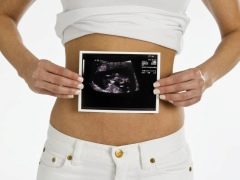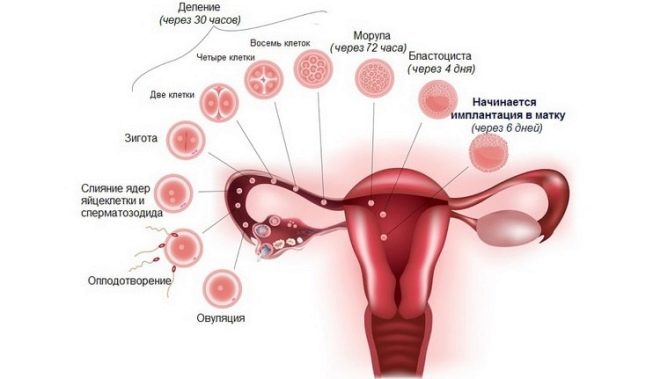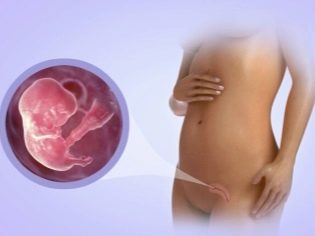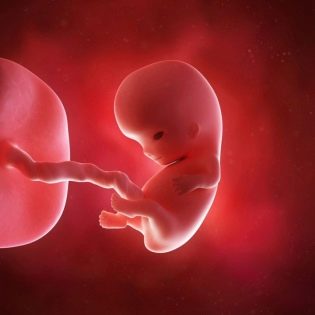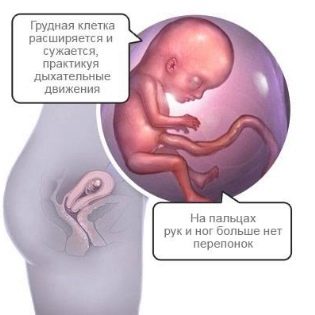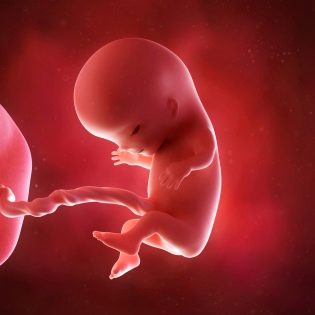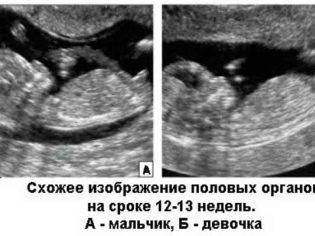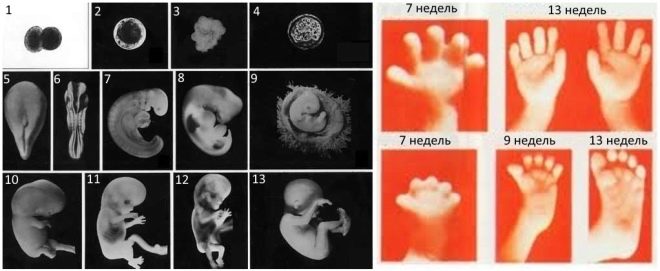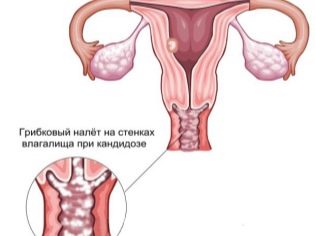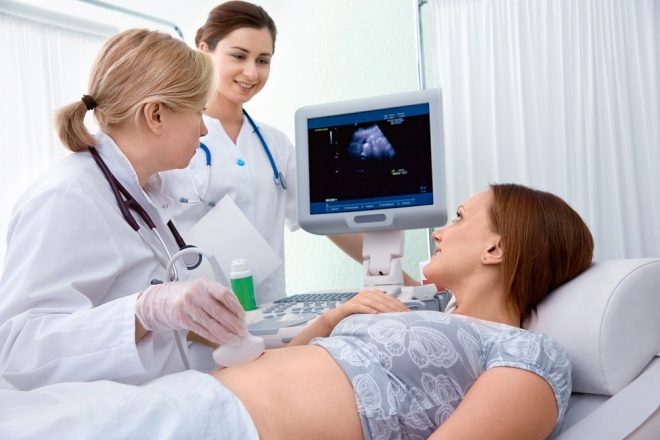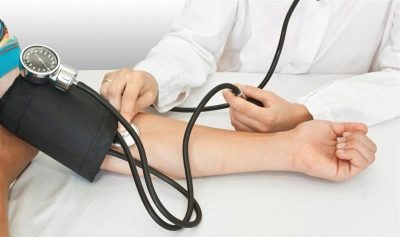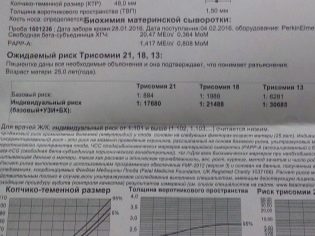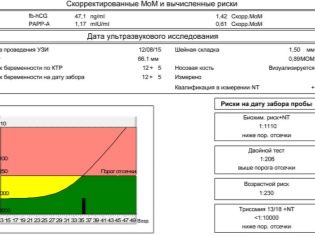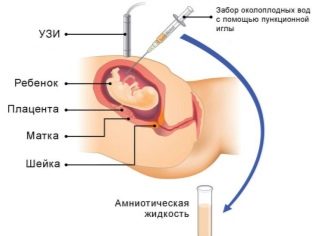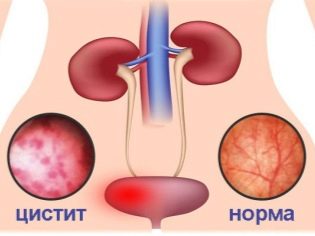What you need to know about the first trimester of pregnancy?
The first trimester of pregnancy without exaggeration is considered the main, laying the foundation for the existence of the baby. It is during this period that all the organs and systems of the new man are formed; the remaining trimesters only provide an opportunity to grow and become larger. And because the first three months of pregnancy require future mothers of special care, prudence, attention and compliance with the recommendations.
When does it begin and end?
The whole period of carrying a baby is divided into three big phases called trimesters, since it includes exactly three months. And only the first period of time consists of several periods - preimplantation, embryonic, fetal. That is, for three months the baby goes an amazing way, changing and transforming almost hourly, turning from two parental cells into one independent, and then into a complex multicellular organism.
In obstetrics, the term of pregnancy is not from conception, because it is not always possible to determine this crucial moment.
Adults reproductively healthy people lead a normal, saturated sex life, and therefore it is virtually impossible to establish as a result of which of the sexual contacts the baby was conceived. Therefore, the obstetric calendar is used to simplify timing. There are obstetric weeks and months. In each of these months, exactly four weeks. therefore obstetric months in pregnancy are ten, not nine.
First week of pregnancy in the understanding of obstetricians, such is not a fact - a woman has another menstruation, and only at the end of the second week one can expect ovulation and conception of a child. A woman cannot conceive a baby on any day of the cycle; this happens only when her egg matures and leaves the follicle. The oocyte is viable only for a day, and therefore conception can actually occur either on the day of ovulation or within 24 hours after it. But ovulation itself may linger under the influence of external and internal factors.
It is for this reason that pregnancy is considered not from ovulation, not from conception, but from the first day of the last to the onset of the "interesting position" of menstruation. In fact, the actual duration of pregnancy differs from obstetric for two weeks. You need to know that all tests, examinations, tables of standards for ultrasound and so on are always presented in obstetric weeks.
Terms of the first trimester - 1-13 weeks pregnancy (again in obstetric terms). During this time, a lot of interesting things happen to both the woman and the baby.
What happens to the baby: the main stages
To imagine what is happening with the baby literally every day of the first trimester, you need to have a developed imagination and good imagination. If we consider the development of crumbs for weeks, it is worth noting the main milestones of its formation.
First and second weeks
A woman is actually not yet pregnant, the fetus does not exist, but everything is actively preparing for its origin in the female body. Another menstruation takes place, under the influence of sex hormones. ovum starts to mature. There are several matures, but only one will become “chosen”. This follicle will be dominant and will grow to a victorious end - until ovulation, the growth of the rest at the hormonal level will be frozen.
At the end of the second week follicle bursts and releases, more precisely, to the ampullary part of the fallopian tube from the right or left side (depending on which ovary the oocyte has produced) a mature egg cell, which is quite ready to wait for a meeting with the sperm cell. Of the millions of male cells, only one wins.
She manages to break through the shell of the oocyte, after which the egg strengthens the shell to impermeability so that no other sperm can penetrate it.
Sperm gets rid of the tail, which he needed only to move, and begins genetic information fusion process female and male gamete. The result is a new cell. That she is - your future child.
Already, at the chromosomal level, there is a lot of important information in it - the gender of the child, his height, facial features, hair and eye color, and skin color. And already at this stage, when future parents are still unaware of the existence of a new life, this cell precisely “knows” what diseases the child will borrow from ancestors, what abilities and talents he will have.
After conception oocyte becomes zygote. Zygote begins to split. It does not increase in size, but quickly increases the number of small cells inside the main one. From the same moment, a large journey of zygotes into the uterine cavity begins, where pregnancy is to develop.
Third week
This week there are very important processes that women often do not realize - the baby is implanted in the uterus or not implanted, and pregnancy does not occur as such. Scarce has already broken up to the state of the morula, and now became blastocyst. And this round and large cellular structure in the third week is floating in the womb in search of shelter. As soon as she manages to stick to the endometrium, she will immediately get down to business - the outer shells will release the villi, which will release the enzyme substance and dissolve the endometrial cells.
So the embryo will be able to "dig in" into the endometrium deeper. The process is called implantationusually occurs 7-8 days after ovulation and lasts no more than forty hours. At the end of the implantation, the pregnancy becomes real, the embryo begins to feed on nutrients and consume oxygen from the maternal blood — the outer villus will be connected to the blood vessels, and then they will have to become a chorion and placenta.
Fourth and fifth weeks
The processes are thin, mostly biochemical. For the first time, the embryo gains a more or less distinct weight, and now we can safely say that even before her mother’s delay her baby weighs about half a gram. In this case, the crumb does not reach even a millimeter in length.
Differentiation of germinal lobes begins - groups of cells that have a similar purpose. Now a heart is formed, there are rudiments of the spinal cord, kidneys, liver and intestines, germ cells. But so far these are not organs, but only clusters of cells from which the necessary organ will then be formed.
The same cannot be said only about the heart - it is now being actively formed by two-chamber, but a little later it will become four-chamber.
Fifth week heart starts to shrink, and a week after the start of the delay, the mother can visit the ultrasound doctor’s office and listen to how it beats, but for now this is only possible with a transvaginal sensor. Simultaneously with the heartbeat, sex cells begin to form in the child.Mom still wonders if she is pregnant or not, and the child already “knows” for sure whether he is a boy or a girl.
Sixth - Seventh Weeks
From the beginning of the delay, only 2-3 weeks pass, and the baby has already achieved and achieved a lot. Just imagine - it has grown to 4 mm and weighs up to one and a half grams by the end of the seventh week.
The neural tube is actively forming, and then it will have to be the brain and spinal cord. There is a tab important for human life immune system. The structures of the tiny head are formed: the dark spots on the sides of the head now “mark” the places where the eyes will later be, and the dimples on the sides will be the future ears.
There are tiny hands, so far without fingers. The child has a semblance of fins and a tail. The ability to move appears only at the end of the seventh week, when the first nerve fibers are formed.
The gut, which is so far only one, is divided into several sections. They will soon become the stomach, pharynx, large intestine and small intestine. The heart is already working more smoothly and supplies blood to the organs and crumbs of the system, and the first placenta up to a centimeter thick appears at the site of attachment of the chorionic villi. One more circle of blood circulation appears - uteroplacental. Often this is why week 7 starts toxicosis.
Eighth and Ninth Weeks
Now your baby has a brain and spinal cord - the neural tube has completed this separation. External genitals begin to form, but as long as you can not even torture the doctor for an ultrasound, the sex of the child is not visible. There is only a common, and for boys and girls, genital tubercle, which will soon become either a clitoris or a penis, but still need to wait until that time.
In the ninth week, the child has all the parts of the body. And almost completed the process of laying organs. By the end of the week, your child will cease to be an embryo, and this is the most important event in his life. He will be the fruit. The baby has almost no tail left, but in general it still resembles a small fantastic dinosaur - with a huge head compared to a calf, with small legs and large hands.
Imagine, already at this time, your child tears off the mouth, future teeth (rudiments inside the gums) are formed in it, the eruption of which you will then wait for.
In addition, he already knows how to clench his hands into fists. He has own blood type, its Rh factor, their lymphocytes are produced, the formed liver and kidneys began to work. The baby weighs about 5 grams.
Tenth and eleventh weeks
Now the child, having completed the most important period of the formation of organs, begins to grow. And this growth will soon become very active. Already now, shortly before the end of the trimester, it weighs about 10 grams and has grown to 7 mm.
Baby brain divided into two hemispheres. But as long as the brain lives on its own, it does not control movements, does not coordinate the work of internal organs. For this, a developed nervous network must be formed, which is happening now.
At the end of 11 weeks for the first time the child will be able to reach out to his face and try to touch it. The baby swallows the amniotic fluid, and then empties the bladder back into the aquatic environment in which it is located, but you should not worry - the waters are clean, sterile, they are updated every three hours.
The face of the child acquires sponges, for centuries, there is a nose and ears, but this is still very small. Growing first hair first skin tactile sensations appeared. There is a diaphragm, and now the chest and abdominal cavities are separated. Develop the eye and optic nerve.
By the end of week 11, crumbs become excellent gourmets - they distinguish the taste of amniotic fluid. Weight reaches 15 grams, and height - up to 8 centimeters. Children to this period are good swimmers - they swim, push off with their feet, turn over. They know how to yawn.
Twelfth and thirteenth weeks
Baby reaches the size of a large lemon. Its height is from 9 to 11 centimeters, and its weight is about 20-22 grams.The eyes from the side surfaces of the head moved to where it was supposed to be - on the front of the head, but so far the crumb does not know how to open and close them. Appears spout makes your baby charming. Now even black-and-white ultrasound images show a pretty sweet topography of the fetal head.
The brain is rapidly developing and acquiring not only the divisions, but also begins to receive from the muscles the first distinct impulses, that is, brain control is established over the functions of the body. The first reflex bowel movements begin. Children of both sexes have genital organs, but for the time being it is rather difficult to consider them - the probability of an error in sexual identification on ultrasound is high.
The baby begins active growth of muscle tissue.
There are basic reflexes - sucking and swallowing. The baby is actively moving. The muscles of the face are best developed at this stage, and therefore baby already has various facial expressions - frowns, puts his lips in a bow and even spits.
Externally, the children at this time are quite unlike beautiful plump kids from the cards. Your child is still very thin, bright red, because his skin is the thinnest parchment through which all the blood vessels pass. As the baby gains weight, accumulates a layer of subcutaneous fatty tissue, its skin will become more and more light, and the forms will become more rounded and pretty.
By the end of the first trimester babies know how to hearbut so far not as we. They have formed only the middle ear, and the finest processes in the inner still continue. But he is able to pick up the vibrations of sound waves. Fully hear it will begin only after a couple of months, when the formation of the auditory nerve, the cochlea, is completed.
In young girls at this time, the sex glands from the abdominal cavity descend into the pelvis, and in boys the testicles remain in the stomach, their way to the scrotum will begin much later. Baby starts actively take calcium from my mother's body - the bones of his skeleton harden. By the end of the first trimester, the vocal cords are formed in the baby.
Woman's well-being
First trimester - without exaggeration the most difficult and difficult during the whole pregnancy. Of course, it is not difficult to carry a child, it is very small, but the body needs to get used to and adapt to the new mode of operation, because the changes in it are large.
Immediately after conception in the body in large quantities released progesterone, then its level is maintained by chorionic gonadotropin, which is produced by chorionic villi. It is progesterone that is important for carrying the fetus, because it takes on numerous changes in the female body - preparing the uterine mucosa for implantation, softens all the mucous membranes in the body, retains fluid and promotes fat accumulation, eliminates uterine tone, and suppresses the immune system of the woman, which can repel a germ that is not one hundred percent native to the genome for a woman (the child has 50% of the paternal DNA).
The action of the hormone extends to the nervous system and psyche.
It is precisely such broad powers of progesterone that are due to the particular state of health of the expectant mother during the first three months of pregnancy. To the most common symptoms and featured first trimester include:
- weakness;
- regular headaches;
- a rise in temperature to 37.0 degrees with no visible signs of illness or a cold;
- slight swelling of the lips, genitals, face, nasal congestion;
- insomnia, irritability, tearfulness, extreme instability of emotions and moods;
- constipation and heartburn (due to reduced contractile activity of the gastrointestinal tract);
- breast pain, breast augmentation (chest hurts because of the activation of progesterone other hormones that are responsible for preparing the mammary glands for breastfeeding - the proportion increases, new milk ducts are formed).
Feelings of women are different. Some do not feel particularly serious, do not experience toxemia, and they have no painful headache. They can be called lucky. But about 8 out of 10 women, according to medical statistics, have certain manifestations of the work of progesterone. Their intensity and severity directly depend on the individual sensitivity, on the initial state of health, on immunity, and even on the psychological and emotional state of the future mother.
Early signs of pregnancy
Many people are wondering whether it is possible to recognize a pregnancy in oneself even before a test can be done or a blood sample can be donated. Officially, medicine believes that such signs do not exist. there is delayed menstruation, and this is the first objective sign of a possible pregnancy, which should be the beginning of the survey: the tests give highly accurate results with 1-2-3 days of delay, and blood test from vein for hCG it can be taken a couple of days before the delay begins - with timely implantation there is a chance that the analysis will already be positive.
But many who are planning to get pregnant are worried about the 14 days that separate their ovulation from the first day of the delay, and the question whether it’s possible to conceive a baby or not becomes one of the most important.
Signs before the delay may or may not be.
Everything again depends on the individual characteristics of the woman’s body. Often, women with confidence felt pregnant a few days before the delay. The earliest (unfortunately, indirectly) with a stretch can be attributed only to those sensations and signswhich women themselves describe in the "pregnant" cycles most often:
- drowsiness, overwhelming desire to sleep both at night and during the day;
- feeling of "fullness" in the lower abdomen;
- weak, spotting short bleeding about a week after ovulation (the so-called implant bleeding);
- sensation of cold and heat, sometimes replacing each other several times in the evening;
- bright and colorful dreams that begin after implantation, a few days before the start of menstruation;
- change in appetite.
Quite often, a woman feels that she is sick - she is shivering, has headaches, rises slightly temperature. This may be due to progesterone immunosuppressive function. Each of these signs may not be a pregnancy, but a common cold or manifestations of premenstrual symptom. But also often the symptoms can be of a psychogenic nature - if a woman really wants to be pregnant, she begins to look for the slightest and sometimes completely absurd signs of an “interesting position” in her condition.
Toxicosis
Intoxication of the body or gestational toxicosis is a phenomenon that is poorly understood, although it is widespread. Since some internal factors affect a woman, the toxicosis of pregnant women is referred to as endogenous conditions. The reasons for it are not well understood, but there is a version, and for now it is considered the most convincing that the same hormone progesterone is to blame for everything. He, in addition to the above, can have a stimulating effect on vomiting center of the brain.
But the main mechanism is the immune system, which is overwhelmingly affected by progesterone. Immune protection "rebels," opposes suppression, and therefore causes symptoms of intoxication.
Most often, the first symptoms manifest themselves at 5-6 weeks or a week later, at 7 weeks of pregnancy. It is with the formation of the placenta that many doctors associate the most painful attacks of toxemia. It manifests itself nausea, vomiting, intolerance to food, certain odors, headaches, diarrhea, and occasionally the appearance of skin rashes.
In most women, early toxicosis ends at 13-14 weeks of pregnancy.
It is by this date that the formation of the placenta is completed. That is, sometimes a whole trimester of toxicosis lasts. But most women say that the condition is noticeably easier by the 12th week.
In case of toxicosis, it is important to pass tests and make sure that there are no leukocyte changes in the blood, and acetone is not elevated in the urine. If there are changes, it is important for the woman to go to the hospital and receive supportive treatment.
To mild toxemia in obstetrics is a condition in which vomiting is repeated no more than 3-4 times a day, and the loss in weight is insignificant, does not exceed three kilograms. Middle the severity is considered to be a state with vomiting up to 8 times per day, with signs of acetonemia, and an increase in pulse rate. Heavy toxicosis is accompanied by dehydration, impaired pulse, rapid heartbeat, vomiting more often 15 times a day, weight loss of more than 8 kilograms. This condition may require not only treatment, but also termination of pregnancy for life reasons.
Factors that increase the likelihood of developing gestational toxicosis, such circumstances are considered:
- pregnant women who are too young - up to 19 years old and “older” - over 35 years old;
- diseases of the kidneys, endocrine glands, immune disorders;
- diseases of the reproductive organs;
- the presence of bad habits in a pregnant woman;
- toxicosis in the first pregnancy, toxicosis in his own mother;
- climate change shortly before pregnancy;
- anemia.
It is necessary to consult a doctor with toxicosis in order to assess its degree in time and correctly, and that a woman should receive the necessary medical assistance if she needs it. On the whole, fractional nutrition, tea with mint and rosehip, water with lemon juice, inhalation of coniferous and citrus aromatic oils. For a woman with toxicosis, it is important to preserve peace of mind and to avoid stress - they aggravate the already difficult state.
Allotment
During the whole first trimester it is necessary to follow the secretions especially carefully, it is the change of their character that can tell a lot. A healthy woman’s condition in a normal pregnancy does not imply any other discharge. except light, white or yellowish. Progesterone gives them yellow color. Up to 7-8 weeks of pregnancy, discharges are usually small and scarce. Then gradually their number begins to increase.
Very often in the first trimester of pregnancy, women are faced with thrush.
It manifests mainly in those who previously suffered from candidiasis at least once. This is the body's response to reduced immunity. Treat candidiasis It should be mandatory - the genital tract should be clean at any time, and especially at the beginning of pregnancy and in its last weeks.
Brown discharges are also difficult to consider normal - they speak of an admixture of stale blood that stood out some time ago. This happens in case of retrohorial hematoma (accumulation of blood in the place of detachment of the ovum), with the threat of miscarriage, with a lack of progesterone levels in the body, which in itself creates a threat of abortion.
If in selections blood present, they can be painted in a variety of ways depending on the amount of blood — red, pink, cream, orange, brown and black. If the secretions are gray or green, and unpleasant, resembling a fishy smell, then we are talking about a bacterial infection process.
Any discharge that is even a little differ from the normif they are under the abdomen, there is pain in the lower abdomen, pulls the lower back, should be the reason for a prompt visit to the doctor. If a day off or a holiday, it is worthwhile to call an ambulance, because very often the pregnancy with the actual threat of miscarriage can be saved.
Stomach
The stomach of women is slender, thin appears earlier, and in the full - later. But in the first trimester, almost no one can see the belly. The only exception may be that thin pregnant women with a narrow pelvis, carrying twins. And even they the tummy is outlined only by the end of the first trimester.
The growth of the abdomen means one thing - the uterus began to leave the limits of the small pelvis and gradually move into the abdominal cavity, where it will grow and settle down until the birth. Up to 12 weeks is considered permissible to sleep on the stomach, if a woman is accustomed to this position, after this period, sleep in this position is not welcome, as well as sleep on the back, since the enlarged uterus is already beginning to gradually compress the vena cava, which is fraught with loss of consciousness and impaired blood circulation, as well as fetal hypoxia.
When to get registered?
By law, a woman has the right to be placed on the dispensary registration of pregnancy at any time when she wants. This means that the doctor in the antenatal clinic does not have the right to refuse registration either if the woman comes in 5 weeks of pregnancy, or if she appears in the consultation for the first time only in the eighth month of pregnancy.
But staging up to 12 weeks is considered the best, because the first trimester is very informative from the point of view of analysis and surveys.
This is a very favorable time, which allows the doctor to learn about the state of the baby and his mother as much as possible. If women are registered up to 12 weeks then she will be given a certificate that will allow her to receive a lump-sum allowance for an early production.
The best time to visit a doctor is Term 6-7 weeks. At this time (2 weeks after the start of the delay), the doctor can already on the gynecological chair determine whether pregnancy is done, ultrasound can be done, signs of the embryo's vital signs can be seen - listen to his heart, measure the copical parietal size to judge the duration of pregnancy and the compliance rate. embryo growth standards. It is at this time that it is worth registering, it will allow, without too much haste, to prepare for the examinations that are coming at the end of the first trimester, and also to find out the pathologies, if any, in the earliest terms.
Surveys and analyzes
During the term of carrying a baby, a woman passes a variety of tests and undergoes various tests. But the most informative value and reliability differ precisely those analyzes and examinations that are prescribed in the first trimester.
When registering
Receiving an exchange card in her hands when registering, a woman along with her gets a solid bundle of directions for analysis. This is the first examination, a kind of doctor’s acquaintance with a woman and her laboratory indicators. It should be noted that all tests are done for free, the doctor has no right to recommend paid tests. What is required to pass:
- blood tests - general and biochemical;
- blood clotting test;
- tests for determining the group and rhesus (with a negative Rh factor, the father of the unborn child is undergoing a similar examination);
- blood for hepatitis B and C;
- blood for syphilis and HIV affiliation;
- blood test for TORCH infection;
- general urine analysis;
- laboratory test vaginal smear.
A woman is weighed, pressure is measured - this will now be done at each turnout in the consultation.
If necessary, conduct an ultrasound to make sure that at the moment there are no complications.
With the passage of the first screening
First prenatal screening - An important survey that completes the first trimester. On the recommendation of the Ministry of Health, it is carried out from 11th to 13th week of pregnancy and includes two types of examination - the study of the biochemistry of maternal serum and ultrasound for the search for markers of chromosomal abnormalities.Screening allows you to set individual, taking into account the age and health status, the risks of congenital fetal neural tube defects, as well as trisomy 21, 18 and other syndromes, better known as Down syndrome, Edwards syndrome and other congenital chromosomal diseases, many of which are incompatible with life.
Screening is done not by people, but by a computer, which receives data on the results of blood tests and ultrasound scanning, the risks are assessed as fractions - likelihood ratios, for example, 1: 46 - high risk, which says that 1 out of 46 such women of the same age and state of health alone will give birth to a child with the indicated trisomy or another syndrome. Risk 1: 2000 - low, not causing concern.
The risk of trisomy 21 (Down syndrome) increases with the age of the mother and father, like most other chromosomal diseases. If a high risk is identified, a woman is offered to undergo additional examinationFor example, a chorionic villus biopsy or amniocentesis (sampling of amniotic fluid for genetic analysis). Invasive methods are quite dangerous, but they have high accuracy - with a probability of 99%, an answer will be received to the question whether the baby has severe chromosomal syndrome.
Puncture Anterior abdominal wall with a long needle for material intake is performed using local anesthesia and under ultrasound control. But there are also non-invasive methods - the so-called NIPT test, which is carried out after 9 weeks of pregnancy. It involves taking a blood test for a pregnant woman, the baby's red blood cells are isolated in it, and DNA is obtained from them, which can answer all the questions.
The analysis appeared in Russia relatively recently, it is not carried out free of charge.
Possible complications and difficulties
The most dangerous weeks of pregnancyAs you might guess, it is in the first trimester that it’s 2-3, 4-6 weeks, 7 weeks, 8-9 weeks. Any misunderstanding that could have occurred at the moment of conception at the chromosomal level, as well as any negative external factors can lead to the fact that the baby stops developing, the pregnancy is interrupted, or a serious vice is formed. Here are the most common problems of this period:
- ectopic pregnancy;
- anembryonia;
- risk of miscarriage;
- missed abortion;
- previa chorion;
- deformation of the ovum.
It is important to know that in the overwhelming majority, at the present level of development of medicine, with the threat of miscarriage, they manage to cope quite successfully. The main thing is not to be silent and not to self-medicate, but to consult a doctor in time with all dubious pains, secretions and other symptoms that cause anxiety.
Useful tips
It is easier to survive difficult first trimester will help simple expert advice.
Drugs and Diseases
Many drugs have a teratogenic effect that is unacceptable in the formation of organs and systems of the child’s body, and therefore in the first trimester no medicineeven a seemingly harmless valerian, take without the knowledge of the doctor can not. There are situations when medicine is really required - a woman has a bacterial infection or a very high temperature, but in each case only the doctor has to decide which antibiotics or antiviral drugs are suitable for pregnant women at the earliest possible time. He will determine the dosage and method of use - inhalation, injections, pills, candles and so on.
Pregnant women in the first trimester often exacerbated hemorrhoids. In this case also the specialist should be engaged in selection of suppositories. With cystitis, which also often accompanies the first 3 months, treatment is necessary, and folk remedies are often not enough.
Can be very dangerous chickenpox, herpes on the lip, genital, cytomegalovirus, measles and other infections, if a woman recovers from them in the first trimester.In each case, they are dealt with individually, but it is often recommended to terminate a pregnancy, since fetal malformations during infection during embryogenesis are almost inevitable.
For headaches, nasal congestion and other "everyday troubles" it is not recommended to immediately grab the medicine - painkillers or drops in the nose, since many changes are caused by progesterone, which means that the drugs will not bring any benefit other than harm.
It is possible to treat teeth in the first trimester if necessary, but x-ray and anesthesia is not recommended. According to reviews, most women plan to visit the dentist for the second trimester, when the main threats are over.
Sex
Not prohibited posture pair can apply arbitrarily. Restrictions apply only to special cases when pregnancy complications are detected, and the physician strongly prohibits intimate life.
Alcohol
Alcohol in the first trimester, as in the following, can have total effects, especially if it is taken systematically. You need to know that non-alcoholic beer, which is often chosen by future mothers, is not completely devoid of alcohol. Alcohol, which the woman took without knowing about the pregnancy, most likely would not hurt, because at that time the baby did not receive nutrition from her mother's blood.
Flying
Any type of transport is allowed, A woman can fly a plane without any problems if there is no threat of miscarriage and an individual ban from a doctor.
Nutrition
In the first trimester for a woman it is important to use more protein foods, especially animal proteins. Proteins are a structural material for the baby. Vegetables and fruits will saturate the diet vitamins and will protect the woman from constipation and diarrhea. You can not eat fried, spicy, smoked, drink coffee.
It is necessary to discuss with your doctor the need for taking vitamins. The needs of women are growing - in the beginning of pregnancy you need more folic acid, it reduces by 75% the probability of the development of fetal neural tube anomalies. From 8-9 weeks you need gradually increase calcium intake and at week 7, vitamin A is needed because the organs of vision are formed. On the basis of biochemical analysis of blood, the doctor will be able to tell which specific substances the pregnant woman lacks, and prescribe to her exactly those multivitamins or individual vitamin preparations that will help eliminate the deficiency and will not cause hypervitaminosis.
